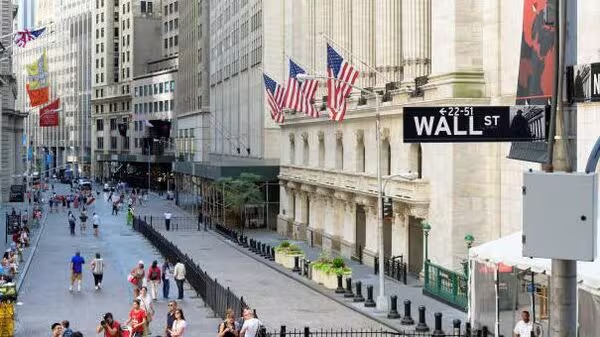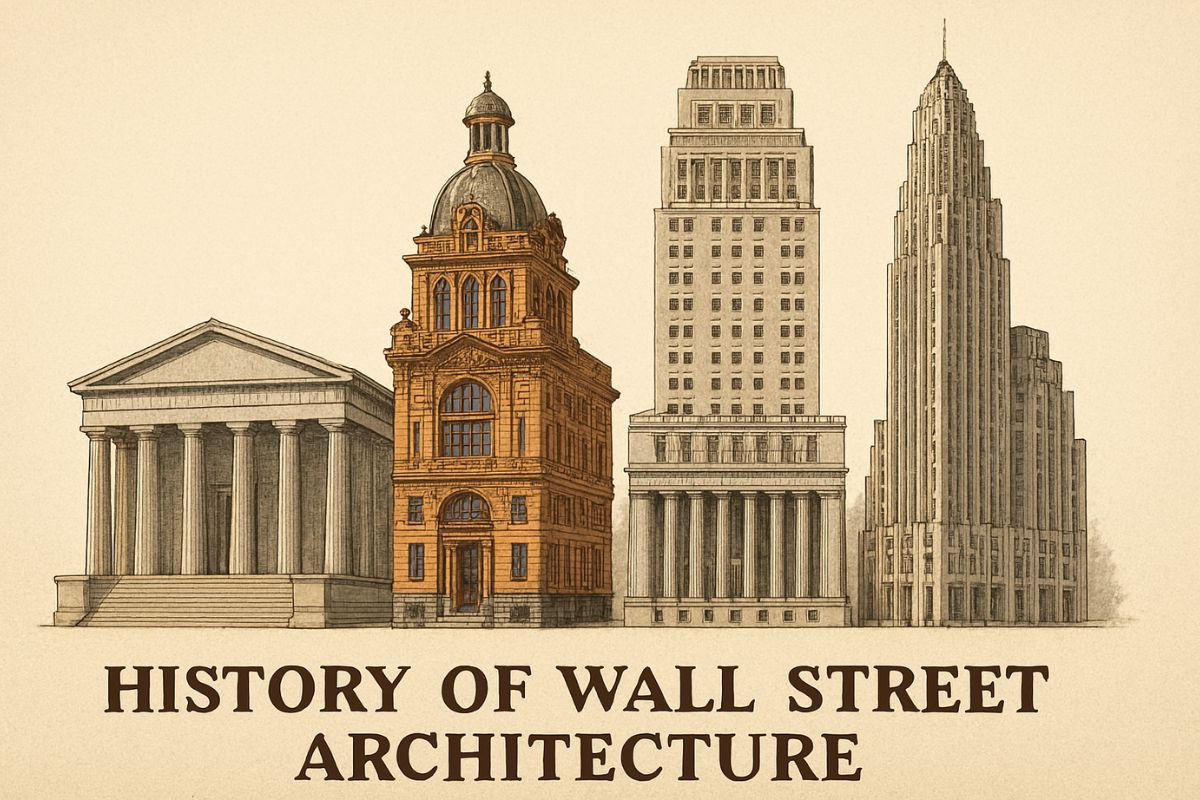Wall Street’s stunning architecture: See how it transformed from a defense wall to towering skyscrapers.
The architectural history of Wall Street
Imagine a time long, long ago, when Wall Street wasn’t about big buildings and lots of money, but actually a simple dirt road with a tall wooden wall! That’s how this famous street in New York City started, more than 350 years ago.

A wall to keep safe (1653-1699)
In the past, the Dutch lived in New Amsterdam, now known as New York. They feared attacks from the British and Native Americans. In 1653, they built a wall, 12 feet high, along what is now Wall Street. This wall, made of dirt and wooden planks, was like a fence. The Wall Street Journal, an important business newspaper, is named after this street.
After about 46 years, in 1699, the wall was taken down because the city had outgrown it. However, the name “Wall Street” remained.
From dirt roads to bustling markets (1700s)
After the wall was removed, Wall Street became a busy marketplace. Merchants and traders met there to do business. For a time, it also served as a slave market, according to Wikipedia.
Traders often gathered under a buttonwood tree at 68 Wall Street. In 1792, some traders signed the “Buttonwood Agreement,” which created rules for trading stocks and bonds. This agreement led to the New York Stock Exchange, where people buy and sell company shares.
Buildings grow taller and fancier (19th century)
In the early 1800s, Wall Street had both homes and businesses, but businesses soon took over. New York City became a key location for money and banking in America, especially after the Erie Canal opened.
After a major fire in 1835, Wall Street was rebuilt with many buildings in the Greek Revival style. These buildings had large columns, like the Parthenon in Greece.
Examples include Federal Hall and the Merchants Exchange building at 55 Wall Street. During the 1880s and 1890s, buildings began to get taller, reaching about 10-12 stories.
Soaring to the sky: The age of skyscrapers (early 20th century)
The 1900s brought skyscrapers, which became symbols of Wall Street’s wealth and power. The New York Stock Exchange building itself was completed in 1903 in the Classical Revival style, with tall columns and white marble.
The “Roaring Twenties” introduced Art Deco, a style using sleek lines, geometric shapes, and decorations. Buildings like 1 Wall Street and 14 Wall Street show this style. 40 Wall Street was once the world’s tallest building.
Adapting to modern times (late 20th century onwards)

Over the years, Wall Street faced challenges like the Great Depression and the September 11.2001, attacks.
Buildings survived, and some were rebuilt or changed for modern needs. After 9/11, some streets were closed to cars and became pedestrian areas, and new security measures were put in place.
Today, Wall Street features a mix of old and new buildings. Historic structures stand alongside modern ones, showcasing Wall Street’s evolution and continued importance in global finance.



